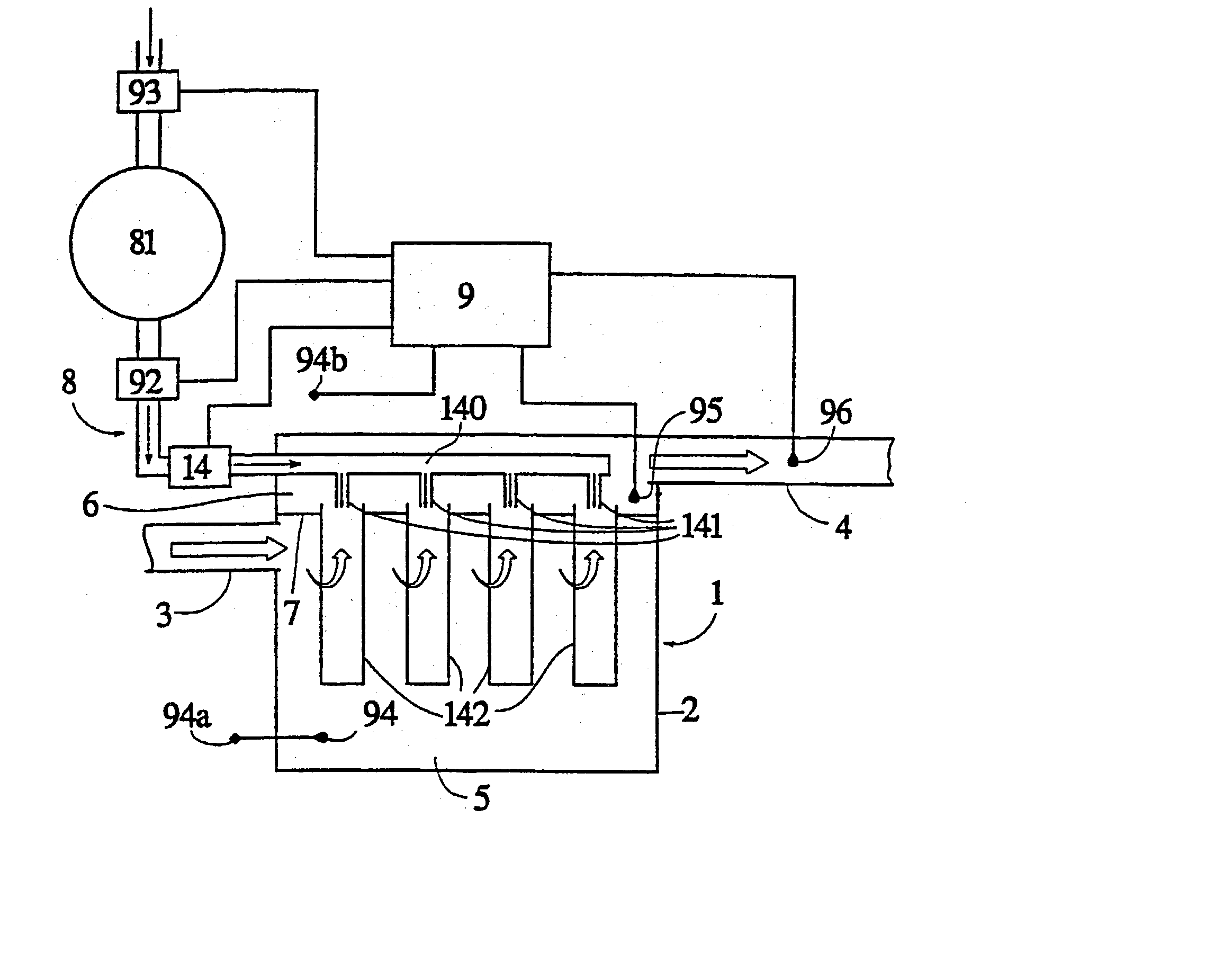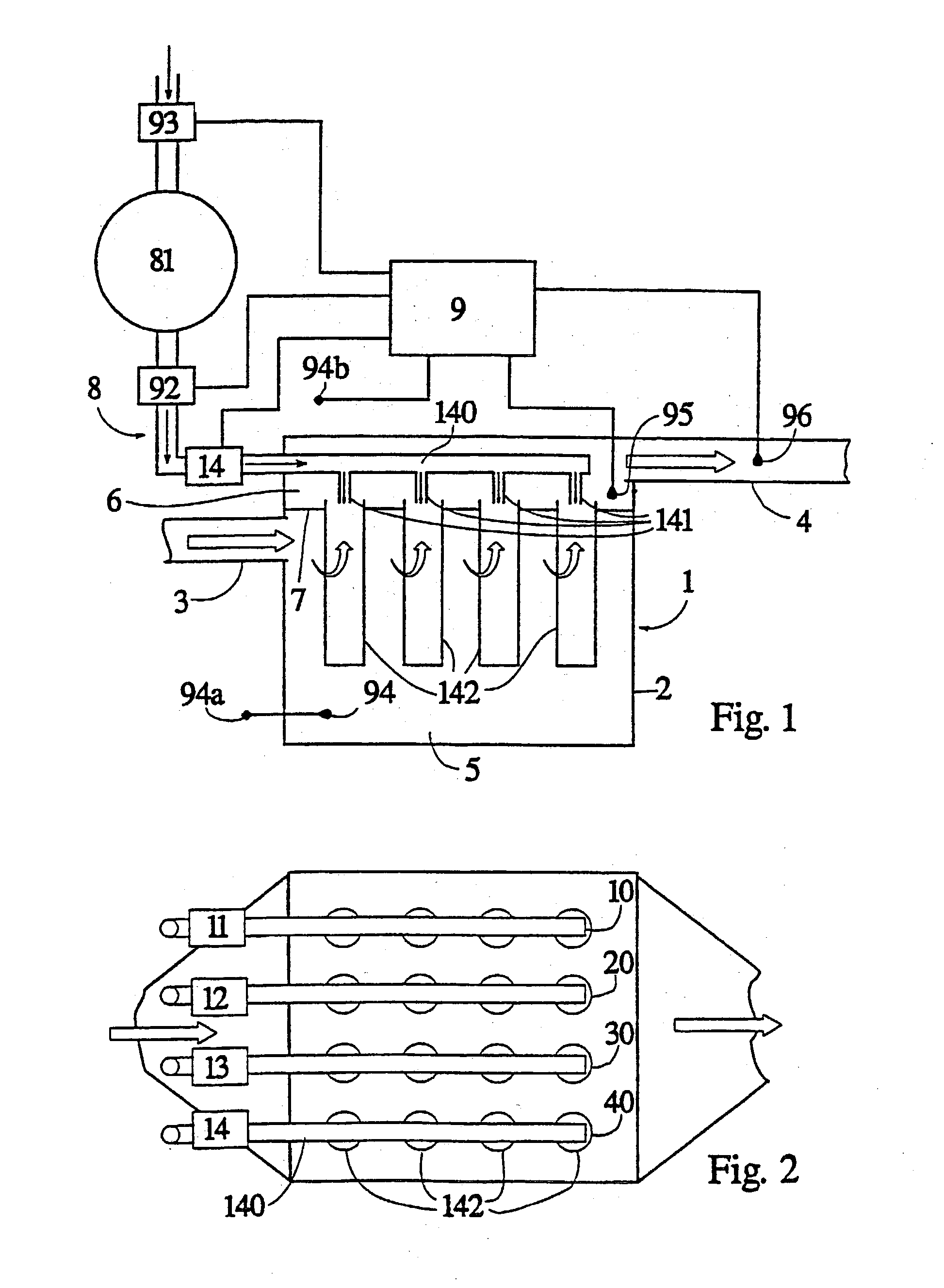Method when cleaning a filter
a filter and filter material technology, applied in the field of filter cleaning, can solve the problems of increased resistance and thus energy consumption, dust penetrates into the filter material, and the emission of dust through the element is noticeable, and the effect of increasing the energy consumption
- Summary
- Abstract
- Description
- Claims
- Application Information
AI Technical Summary
Benefits of technology
Problems solved by technology
Method used
Image
Examples
Embodiment Construction
[0027] In FIG. 1 and FIG. 2, a tubular filter 1 with a housing 2, an inlet 3 for the gas to be purified, and an outlet 4 for the purified gas are disclosed. The tubular filter 1 is divided into a raw gas chamber 5 for the incoming gas and a pure gas chamber 6 for the outgoing gas by an intermediate wall 7.
[0028] The intermediate wall 7 supports four rows 40, 30, 20, 10, each having four filter tubes 142.
[0029] To the tubular filter 1, a system 8 is connected for cleaning the filter tubes 142 by means of pressurized air pulses. To this purpose each row 40 etc. of tubes 142 is provided with a distributing pipe 140 having a nozzle 141 located centrally above each tube 142. For each row 40, 30, 20,10 there is a separate valve member 14, 13, 12, 11 on the distributing pipe 140.
[0030] A pressurised air tank 81 is via a first control member 93 connected to a not shown overpressure source, for instance a compressor, and via a second control member 92 connected to said valve members 14 etc.
[...
PUM
| Property | Measurement | Unit |
|---|---|---|
| pressure drop | aaaaa | aaaaa |
| pressure drop | aaaaa | aaaaa |
| pressure drop | aaaaa | aaaaa |
Abstract
Description
Claims
Application Information
 Login to View More
Login to View More - R&D
- Intellectual Property
- Life Sciences
- Materials
- Tech Scout
- Unparalleled Data Quality
- Higher Quality Content
- 60% Fewer Hallucinations
Browse by: Latest US Patents, China's latest patents, Technical Efficacy Thesaurus, Application Domain, Technology Topic, Popular Technical Reports.
© 2025 PatSnap. All rights reserved.Legal|Privacy policy|Modern Slavery Act Transparency Statement|Sitemap|About US| Contact US: help@patsnap.com


